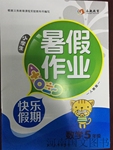题目内容
Sit down, Emma.You will only make yourself more tired,________on your feet.
A.to keepB.keeping
C.having keptD.to have kept
练习册系列答案
 永乾教育寒假作业快乐假期延边人民出版社系列答案
永乾教育寒假作业快乐假期延边人民出版社系列答案
相关题目
题目内容
Sit down, Emma.You will only make yourself more tired,________on your feet.
A.to keepB.keeping
C.having keptD.to have kept
 永乾教育寒假作业快乐假期延边人民出版社系列答案
永乾教育寒假作业快乐假期延边人民出版社系列答案